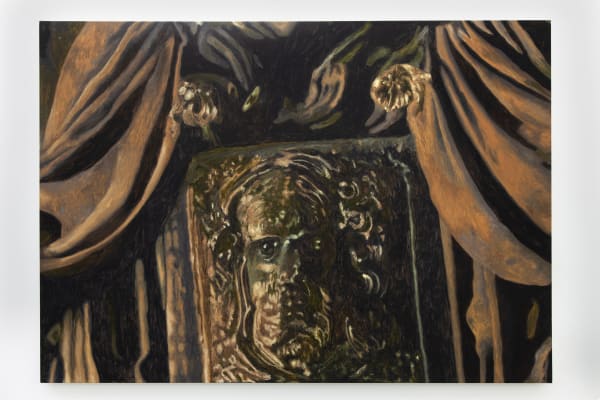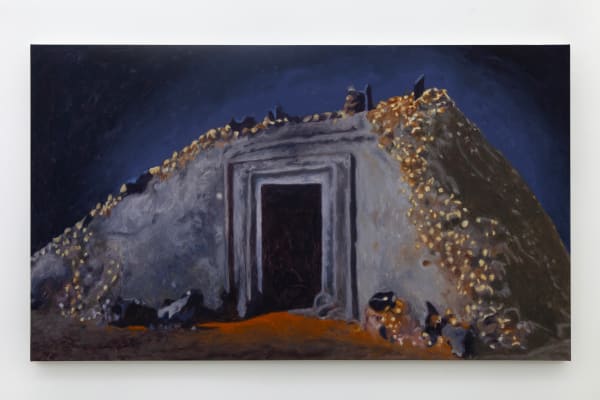Victor Mattina: Assim passou a ver tudo quanto não havia
Victor Mattina's paintings are like sphinxes. These fantastic mythological creatures, present in different ancient cultures, are usually represented with a lion's body and a human face. They became known, most notably, through the myth of Oedipus and the Sphinx. The story goes that the Sphinx challenged all those who tried to cross the desert with a riddle that had only one right answer. Those who replied incorrectly were devoured. Oedipus stood before the Sphinx and managed to get the answer right. The images constructed by Mattina work in the same way. This new group of works in the exhibition Assim que passou a ver tudo quanto não havia [As soon as you started to see everything that was not], reveals the most recent pictorial exploration of the artist from Rio de Janeiro, who since 2010 has been using painting to investigate issues related to the opacity of the image, its construction, authenticity, replicability, and authorship. When we look at the almost ten canvases gathered, they seem to stare back with a single question: "What do you see?"
The title of the show is a reinterpretation of an excerpt from the song Genesis, by Caetano Veloso: "As soon as there was everything that was not there". In the original Portuguese version of these texts, "was" and "see" are homophones, so replacing one for the other maintains the same sounds, but also emphasizes the importance of the gaze in Mattina's research. His starting point is images found or produced via online search engines and artificial intelligence. The artist directs with some information, commands or keywords, and the mathematical tool articulates patterns, recurrences, models to give answers. All this information inevitably generates noise, including the visual type, and it is in these nebulous areas that he operates. Mattina, who once wanted to be a magician, constructs illusory images, mirages, where we almost always see what we want to, or what we have the tools to see. They are images often marked by a cold light, like that of screens and displays of electronic devices, which dazzle the eye and work almost like mirrors, while at the same time making us believe in the possibility of a certain religiosity or a fantastical/ dreamlike character present there. It is a false aesthetic promise - one that images, including paintings, always seems to make. It is like a silent gospel.
After some time looking at these images, the question What do you see? seems to almost inevitably lead to a second question: Why do you see what you see?. Victor's paintings construct images that are not quite what they seem. Ever. Unlike Oedipus' Sphinx, there is no right answer here. What exists is an interest in the question, in doubt, and in leading us to undertake the exercise of thinking about things that we increasingly take for granted – be it due to an unshakeable belief, convenience or habit. It makes me think of Tunga, for whom art was the possibility of answering a question with another question. And that is exactly where a certain mythological or religious aspect in Victor Mattina's paintings draws our attention. Both mythology and religion are born as attempts to talk about origins - be it of the world, of behaviors, and even of images. They are tools for how we can or should look at the world. As such, this possible mythological or religious dimension would not occur on the surface, through the construction of fantastical or ancestral images, but rather as a matter of principle, of operating in the same logic, placing us before images assembled to take us far away, and therefore better see what is on our side.
Fernanda Lopes
![Victor Mattina hum:O, 2023 Óleo sobre tela [Oil on canvas] 90 x 130 cm 35 3/8 x 51 1/8 in](https://artlogic-res.cloudinary.com/w_800,h_800,c_limit,f_auto,fl_lossy,q_auto/artlogicstorage/galeriaathena/images/view/62785067a490fd28e0b07df1bfd97c51j/galeriaathena-victor-mattina-hum-o-2023.jpg)







